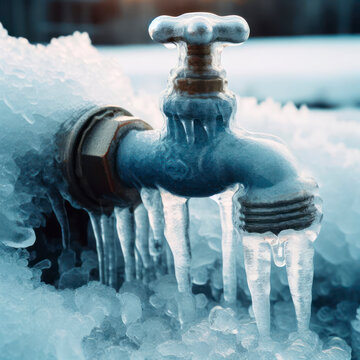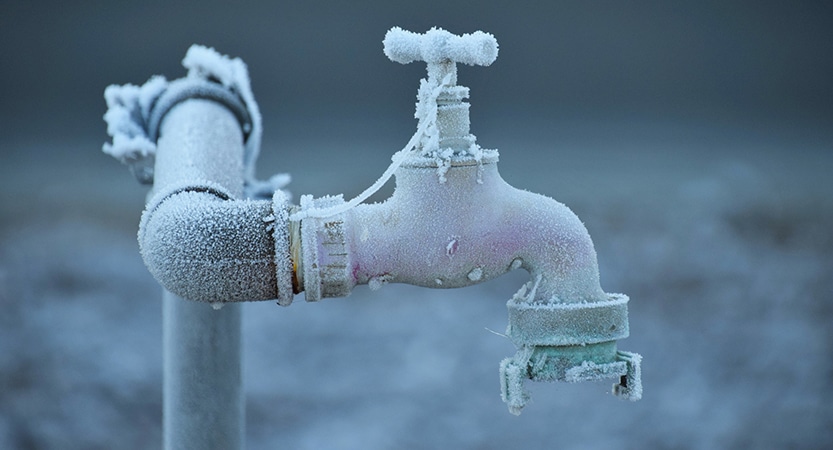Tips to Maintain Pipes from Cold Weather Issues: Crucial Guidance
Tips to Maintain Pipes from Cold Weather Issues: Crucial Guidance
Blog Article
Just about every person will have their personal thinking in relation to Prevent Frozen Pipes .

Winter can wreak havoc on your pipes, especially by freezing pipes. Below's exactly how to prevent it from taking place and what to do if it does.
Intro
As temperatures decline, the risk of icy pipes boosts, potentially resulting in pricey repair work and water damages. Understanding exactly how to avoid icy pipes is crucial for house owners in cold environments.
Recognizing Frozen Pipes
What triggers pipes to freeze?
Pipelines ice up when revealed to temperatures below 32 ° F (0 ° C) for extended periods. As water inside the pipes freezes, it expands, putting pressure on the pipe walls and possibly causing them to rupture.
Threats and damages
Icy pipelines can result in water system disturbances, home damage, and pricey repairs. Ruptured pipes can flood homes and trigger considerable architectural damages.
Indicators of Frozen Piping
Recognizing frozen pipelines early can avoid them from bursting.
How to recognize frozen pipelines
Try to find decreased water circulation from faucets, uncommon smells or noises from pipelines, and noticeable frost on exposed pipelines.
Avoidance Tips
Protecting at risk pipes
Cover pipelines in insulation sleeves or utilize warmth tape to protect them from freezing temperature levels. Focus on pipes in unheated or external locations of the home.
Heating methods
Maintain indoor rooms sufficiently warmed, specifically areas with plumbing. Open cabinet doors to allow cozy air to flow around pipes under sinks.
Safeguarding Outdoor Plumbing
Garden tubes and outdoor taps
Disconnect and drain yard hoses before winter months. Install frost-proof faucets or cover exterior faucets with protected caps.
What to Do If Your Pipelines Freeze
Immediate actions to take
If you presume icy pipes, keep faucets available to relieve pressure as the ice thaws. Make use of a hairdryer or towels soaked in hot water to thaw pipes slowly.
Long-Term Solutions
Structural modifications
Think about rerouting pipelines far from exterior walls or unheated areas. Include added insulation to attic rooms, cellars, and crawl spaces.
Upgrading insulation
Invest in high-quality insulation for pipes, attic rooms, and walls. Correct insulation helps preserve regular temperature levels and decreases the danger of icy pipes.
Final thought
Stopping icy pipes requires positive actions and quick actions. By recognizing the reasons, indicators, and preventive measures, property owners can shield their pipes throughout winter.
5 Ways to Prevent Frozen Pipes
Drain Outdoor Faucets and Disconnect Hoses
First, close the shut-off valve that controls the flow of water in the pipe to your outdoor faucet. Then, head outside to disconnect and drain your hose and open the outdoor faucet to allow the water to completely drain out of the line. Turn off the faucet when done. Finally, head back to the shut-off valve and drain the remaining water inside the pipe into a bucket or container. Additionally, if you have a home irrigation system, you should consider hiring an expert to clear the system of water each year.
Insulate Pipes
One of the best and most cost-effective methods for preventing frozen water pipes is to wrap your pipes with insulation. This is especially important for areas in your home that aren’t exposed to heat, such as an attic. We suggest using foam sleeves, which can typically be found at your local hardware store.
Keep Heat Running at 65
Your pipes are located inside your walls, and the temperature there is much colder than the rest of the house. To prevent your pipes from freezing, The Insurance Information Institute suggests that you keep your home heated to at least 65 degrees, even when traveling. You may want to invest in smart devices that can keep an eye on the temperature in your home while you’re away.
Leave Water Dripping
Moving water — even a small trickle — can prevent ice from forming inside your pipes. When freezing temps are imminent, start a drip of water from all faucets that serve exposed pipes. Leaving a few faucets running will also help relieve pressure inside the pipes and help prevent a rupture if the water inside freezes.
Open Cupboard Doors
Warm your kitchen and bathroom pipes by opening cupboards and vanities. You should also leave your interior doors ajar to help warm air circulate evenly throughout your home.

We were made aware of that editorial on How To Avoid Freezing Pipes from a good friend on our other site. Are you aware of somebody who is excited about the topic? Take a moment to share it. Thank you so much for going through it.
Click For More Info Report this page